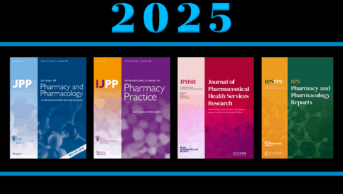It is native to Britain and extends throughout most of Europe into Central Asia and Western Siberia. Wild comfrey was taken to the US by English emigrants.
In all western European languages, the name for comfrey is derived from its application. All the different names focus on uniting and firming. For example, the Greek term symphyton, (symphytum in Latin), is derived from symphyo; “I grow together”. Solidago, derived from solido (“I make firm”), was also a synonym.
The Latin consolida, frequently found in historical papers, means “the one who makes firm”. The evolution of the word “comfrey” comprises the middle English comferi, from the old French cumfirie, from vulgar Latin confervia, from confervere(“to boil together”).
The German names, Beinwell and Wallwurz, are based on the verb wallen, which means “growing together”. Bein originally meant bone, thus comfrey is an agent that makes bones grow together. Comfrey has also been known as boneset, knitbone, black wort, wall wort, and slippery root.
Comfrey in ancient times

The ‘Naturalis historia’ of the Pliny the Elder (23?–79 AD) is one of the most important testimonies of ancient phytomedicine. In book 26, chapter 137, comfrey is mentioned for the first time for the treatment of bruises and sprains, and a syrup of the herb or a decoction of its root are used.
Chapter 148 claims that comfrey ensures rapid healing of wounds and, in chapter 161, comfrey is mentioned as an emmenagogue when ground into dark wine.
Dioscorides’s ‘Materia medica’ is the oldest materia medica in Europe. Created at the same time as, but independent from, the ‘Naturalis historia’, it has been shaping European and Arabic phytotherapy for nearly 2,000 years.
Dioscorides also mentions comfrey: “The roots below are black on the outside and white and slimy on the inside. …Finely ground and then drunk they are beneficial for those spitting blood and those suffering from internal abscesses. Used as a compress they also seal fresh wounds. They have a joining together effect when cooked with pieces of flesh. They act as cataplasm in the case of inflammation, especially in the anal area.”
The Middle Ages and early modern times
The treatment of rheumatism and gout were added to the indications for comfrey in the Middle Ages. Nicholas Culpeper (1616–54) mentioned the herb in ‘The English Physitian’. He wanted to give the poor access to affordable herbs and medicines and turned against doctors and pharmacists who prescribed common medicinal plants using their Latin names and then over-priced them, as well as against importation of expensive drugs.
As a pretext to the extended edition of 1656 he wrote: “Containing a Complete Method or Physick, whereby a man may preserve his Body in health; or Cure himself, being Sick, for three pence Charge, with such things only as grow in England, they being most fit for English Bodies.”
Regarding comfrey, Culpeper stated: “It is said to be so powerful to consolidate and knit together; that if they be boyled with dissevered pieces of flesh in a pot, it will join them together again, and a Syrup made thereof is very effectual for all those inward Griefs and Hurts; … and for outward Wounds and Sores in the Fleshy or Sinewy part of the Body whatsoever … A Decoction of the Leaves hereof is available to al the purposes, though not so effectual as the Roots.”
Further, he recommends comfrey for: “Spitting, pissing Blood, Inward Wounds & Bruises, Phtisick, Bloody Flux, Terms stops, Whites, Nervs cut, Muscles cut, sharp Humors, Wounds, Ruptures, broken Bones, Knotted Breasts, Hemorrhoids, Inflamation, Gout, Pained Joynts, and Gangreans.”
Other books published on the continent during this era also list similar indications.
20th century
During the 20th century the number of indications in standard publications like ‘Hagers Handbuch der Pharmazeutischen Praxis’ (handbook of pharmaceutical practice; 1978) increased considerably. External use is indicated for periosteum problems, bone fractures, promotion of callus formation, neuralgia after fractures, strains, contusions, tenosynovitis and inflammation of a muscle, haematoma, thrombosis, arthritis, wounds that heal badly and periodontosis. Internal use is directed for gastritis, peptic ulcers, cough remedies and use as a popular medicine in cases of rheumatism, pleurisy, bronchitis, diarrhoea and tumours.
Besides medicinal purposes, comfrey was grown for use in cooking and for feeding livestock. The plant was also used as a food during the potato famine in Ireland in the 1840s. Today, however, the internal use of unprocessed comfrey is not recommended.
Farmers value comfrey as a nutritious fodder for cattle and, when the leaves are soaked in rainwater for a few weeks they produce a valuable fertiliser for the garden, especially for tomatoes and potatoes.
In the second half of the 20th century the active constituents of comfrey were detected for the first time. These include allantoin and mucilaginous substances. Rosmarinic acid and other hydroxycinnamic acid derivatives (including caffeic acid and chlorogenic acid) are most likely also have a central significance for the pharmacodynamics.
However, their exact molecular mechanism has not been completely determined. Further, comfrey contains potentially toxic pyrrolizidine alkaloids, but absorption is significantly lower through the skin compared with if given orally. Today, licensed preparations contain extracts which are almost PA-free. For this purpose, comfrey roots with low PA levels are used; moreover, in the course of the extraction procedure, the alkaloids are reduced to the detection limit.
In a monograph, the German Commission E positively rated the use of comfrey root (symphyti radix) for external application to treat bruises, pulled muscles and tendons, and sprains. Currently, about 10 controlled clinical trials have examined the efficacy and tolerability of topical formulations containing comfrey.
A recently published clinical trial, meeting all modern standards of good clinical practice, comparing an ointment of comfrey root extract with placebo to treat acute sprains reported a significant superiority in efficacy of the comfrey ointment. In another focusing on acute ankle sprains, the same topical preparation was compared with diclofenac diethylamine gel. The published results not only demonstrated non-inferiority of the comfrey extract in all measured variables but indicated that phytotherapy in this case may be superior to conventional medicine.
The most recent randomised, double-blind placebo-controlled trial (published in Phytomedicine 2007;14:2–10) has demonstrated the therapeutic efficacy and safety of a comfrey root extract ointment in the treatment of patients with painful osteoarthritis of the knee.
Today, topical preparations of comfrey root extract are clinically proven and licensed in several countries to treat muscle and joint ailments.


